Purchasing a sleek new gadget comes with as much confusion as excitement. The confusing array of buttons, settings, and menus leaves you asking for a guide like a user manual.
A well-crafted user manual bridges your product and its users, guiding them through its functionalities, troubleshooting common issues, and empowering them to unlock their full potential.
In this blog, we’ll discuss how to create a user manual that genuinely empowers your audience. We’ll explore different types of manuals, essential elements, and real-world examples and explore the best user manual creator tools for writing and designing effective guides.
What is a User Manual?
A user manual is a detailed guide that provides instructions and information on how to use a product, service, or system effectively. It is a comprehensive resource that helps users understand functionalities, troubleshoot issues, and maximize the benefits of the product or service.
It provides detailed instructions and information on using a product or service effectively. It serves as a reference guide for customers, helping them understand a product’s functionalities, features, and potential applications.
For example, a user manual for a new smartphone would include step-by-step instructions on how to set up the phone, use its features, troubleshoot common problems, and access customer support. This empowers users to navigate the device with confidence and utilize its full potential.
What Are the Different Types of User Manuals?
There are different types of user manuals to cater to different businesses with different types of products. You can go ahead with the one that best fits your business requirements. Let’s discuss the important ones.
Instruction Manual
Creating an instruction manual provides detailed guidance on assembling, using, or operating a product. It usually includes step-by-step instructions, diagrams, and safety precautions.
For example, a user manual for a digital camera would provide instructions on how to turn the camera on/off, adjust settings, and capture photos.
Training Manual
A training manual educates users on how to use a product or service proficiently. It goes beyond basic instructions and explores various features, functionalities, and workflows.
You can create a training manual to help employees improve their skills and stay updated with company developments.
For example, a software training manual would provide comprehensive training on using different software modules or functions. It may include exercises or practice scenarios for users to learn from.
Service Manual
A service manual is mainly intended for technicians or personnel who perform repairs, maintenance, or troubleshooting on a product or equipment. It contains in-depth information on technical specifications, diagnosis procedures, and repair instructions.
For example, a service manual for a car would provide detailed instructions for addressing specific mechanical issues.
Operations Manual
An operations manual explains operating a complex system or equipment effectively and safely. It provides information on the system’s controls, settings, and proper usage.
For example, an operations manual for an industrial machine would detail the operational procedures, safety precautions, and maintenance requirements.
Policy & Procedure Manual
A policy and procedure manual, similar to a standard operating procedure manual, outlines the rules, regulations, and guidelines governing a specific organization or process.
When you create policy procedure manuals, they provide employees or users with clear instructions on adhering to organizational policies and correctly executing procedures.
For example, an employee handbook would outline policies on topics such as leave, code of conduct, and professional standards.
Why Does Your Business Need User Manuals?
A customer-centric user manual helps enhance the user experience and satisfaction. Let’s discuss the key benefits.
Improved User Understanding
Creating a technical manual helps users better understand the product or service they are using. By providing clear and concise instructions, explanations, and visuals, users can understand how the product works and how to utilize its features effectively.
This understanding reduces ambiguity and confusion, helping users to maximize the product’s capabilities.
Enhanced User Engagement
When a user manual is customer-centric, it focuses on addressing users’ needs and concerns. If you lack a specialized platform, you can create a user manual in Word.
Providing relevant and valuable content, engaging visuals, and user-friendly language makes the manual more attractive and exciting for users to read and follow.
This increased engagement encourages users to explore more of the manual, enabling a deeper understanding of the product and its functionalities.
Reduced Support Queries
A well-written and comprehensive user manual can significantly reduce the number of support queries or tickets users raise.
By providing answers to common questions, troubleshooting guidance, and clear instructions, end users can find solutions to their issues or questions without contacting customer support. This leads to less strain on support teams and faster resolution times for critical support cases.
Efficient Self-Help Resource
A customer-centric user manual serves as an efficient self-help resource. Instead of relying solely on external support channels, users can refer to the manual for answers, guidance, and troubleshooting steps.
This enables them to take ownership of their experience and resolve their issues independently, resulting in increased satisfaction and reduced dependency on external support.
Increased Product Adoption
A user manual designed with the customer in mind encourages users to explore and utilize more product features.
By providing clear instructions on all aspects of the product, like advanced functionalities, users are more likely to discover and adopt these features, unlocking the product’s full potential.
Increased product adoption leads to a better return on investment for customers and enhances the overall user experience.
Customer Satisfaction & Loyalty
When users have access to a comprehensive and user-friendly manual that addresses their needs and enables them to use a product effectively, it results in higher customer satisfaction.
A satisfied customer is more likely to become loyal, leading to repeat purchases and positive word-of-mouth recommendations.
A customer-centric manual builds a strong customer relationship and enhances their overall experience with the product or service.
What Are the Essential Elements of a Good User Manual?
A well-crafted user manual is more than just a collection of instructions. Here are the essential elements that contribute to a great user manual:
Clear & Simple Language
Use clear and concise language that is easy for your target audience to understand. Avoid jargon, technical terms, and complex sentence structures. Write in an active voice and focus on providing actionable instructions.
Visual Elements & Guidance
Incorporate visuals such as images, diagrams, screenshots, and videos to enhance understanding and engagement.
Visuals can often convey information more effectively than text alone, especially for complex procedures or technical concepts.
Logical Structure & Flow
Organize your content in a logical hierarchy, starting with basic information and progressing to more advanced topics.
Use headings, subheadings, and a table of contents to guide users through the information. Ensure a smooth flow of information, connecting related concepts and providing a clear path for users to follow.
Problem-Solving Focus
Frame your content around the problems users try to solve with your product or service. Address common pain points, provide step-by-step solutions, and offer troubleshooting tips to help users overcome challenges and achieve their goals.
Searchable Content
Make your user manual easily searchable, allowing users to find the information they need quickly.
To handle various queries, use relevant keywords, a clear and consistent labeling system, and a robust search function.
Clear Topics & Relevant Articles
Organize your content into distinct topics and subtopics, ensuring each article focuses on a specific subject.
Provide clear titles and headings that accurately reflect the content of each article. Link related articles together to create a seamless information ecosystem.
Feedback & Reviews
Encourage users to provide feedback on your user manual. This can help you identify areas for improvement, ensure accuracy, and keep your content relevant.
Set up a feedback mechanism, such as a comment section or a rating system, to gather user input and continuously improve your documentation.
How to Create a User Manual in Simple Steps
Creating a user manual isn’t Rocket Science but really easy if you have a robust user manual creator platform. Let’s discuss some simple steps on how to build a user manual.
1. Choose a Feature-Rich User Manual Creator Platform/Tool
Start by choosing user manual software with the features and functionalities you need to create professional and engaging documentation.
Look for tools that offer a user-friendly interface, a variety of templates, rich text editing capabilities, multimedia support, and customization options.
Consider factors like ease of use, collaboration features, version control, and integration capabilities with other tools you might be using.
2. Choose a Template or Start from Scratch
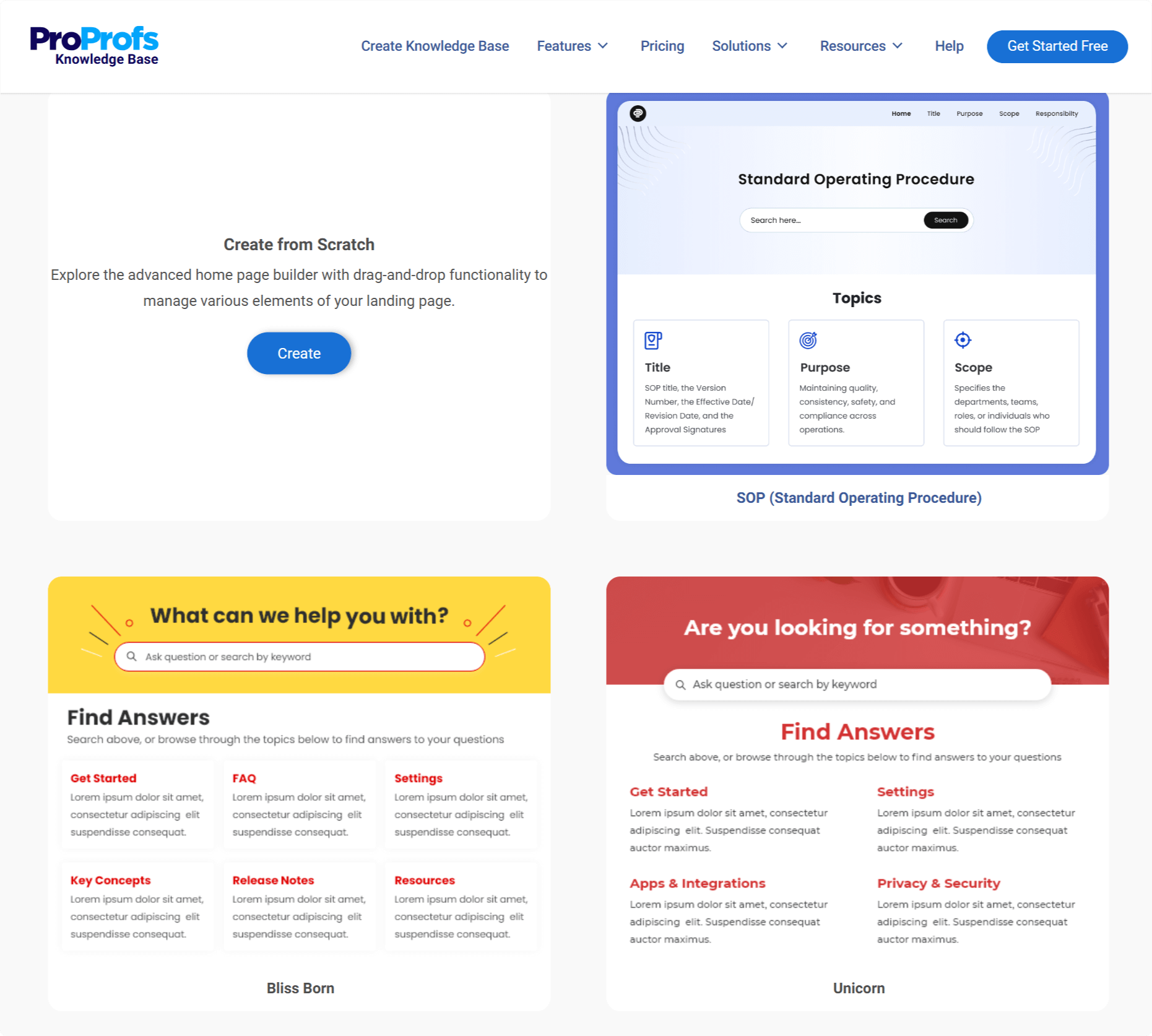
Most user manual software offers templates tailored to different types of manuals, such as quick start guides, troubleshooting guides, or comprehensive product manuals.
Select a template that aligns with your content and audience, or start with a blank canvas if you prefer a fully customized approach.
Also, see if the templates available are customizable so that you can tailor your user manual or the knowledge base as per your brand elements, including brand colors, fonts, logos, etc.
3. Structure Your Content
Organize your manual into logical sections and subsections using headings and subheadings. This creates a clear information hierarchy and makes users’ navigation and finding what they need easier.
Utilize the software’s features to create a table of contents, add page breaks, and structure your content effectively.
Think about the user journey and how you can present information in a way that is easy to follow and understand.
4. Populate with Content
Start filling in the sections with your content. Use the editor to write clear and concise instructions, explanations, and descriptions.
Use bullet points, numbered lists, and concise paragraphs to break down complex information into smaller, digestible chunks. Most user manual software supports rich text formatting, allowing you to bold, italicize, and highlight key information for emphasis.
Consider using different font sizes and styles to create a visual hierarchy and improve readability.
5. Add Visuals
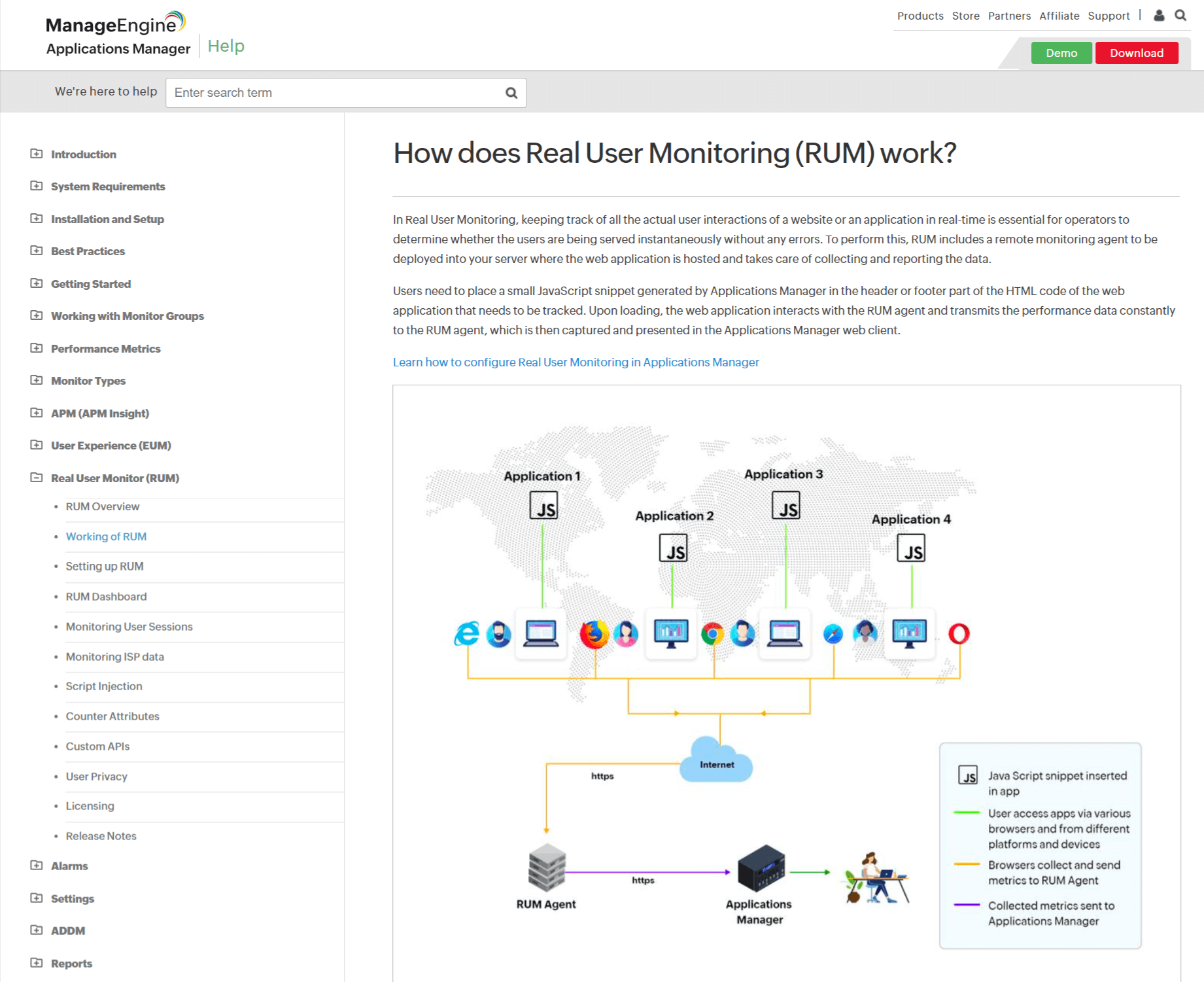
Enhance your user manual with visuals such as images, screenshots, diagrams, and videos.
Visuals can often convey information more effectively than text alone, especially for complex procedures or technical concepts.
Most user manual software allows you to embed these visuals directly into your content easily. Ensure your visuals are high-quality, relevant, and appropriately sized for optimal viewing.
6. Add Interactive Elements
Consider incorporating interactive elements to make your user manual more engaging and user-friendly.
This might include clickable buttons that link to relevant sections, expandable sections that reveal additional information on demand, or embedded quizzes to test user comprehension.
Such interactive elements keep the users engaged and bring more fun to the usual, boring content, enhancing learning and providing a more dynamic experience.
7. Customize the Design
Apply your branding elements, such as your logo, colors, and fonts, to create a consistent and professional look and feel.
Many user manual software tools offer customizable themes and CSS options to tailor the design to your preferences.
Ensure your design is visually appealing, easy to read, and consistent with your brand guidelines.
8. Preview & Publish
Before publishing your user manual, use the preview function to see how it will look to your audience.
This lets you catch any formatting errors, inconsistencies, or broken links. Once satisfied, publish your manual in your desired format, whether a downloadable PDF, an online version hosted on your website, or both.
Consider the accessibility of your chosen format and ensure it can be accessed by users with disabilities.
What Are the Best Practices for Creating a User Manual?
Creating a truly effective user manual requires more than just listing features and instructions. Here are some best practices to keep in mind:
Adopt a User-Centric Approach
Always keep the user’s perspective in mind. Anticipate their needs, address their pain points, and strive to create an intuitive and enjoyable experience.
Maintain a Consistent Style & Tone
Establish a style guide for your user manual to ensure consistency in language, formatting, and tone. This creates a cohesive and professional feel, making your documentation easier to read and understand.
Use a Content Management System (CMS)
Employ a CMS to manage your user manual effectively. This allows for easy updates, version control, and collaboration among team members.
Incorporate User Feedback
Actively solicit and incorporate user feedback to continuously improve your manual. Provide feedback mechanisms within your documentation or conduct user surveys to gather insights.
Test & Validate Your Documentation
Before releasing your user manual, thoroughly test it with a representative group of users. This helps identify any gaps, inconsistencies, or areas of confusion.
Optimize for Findability
Ensure your user manual is easily discoverable through search engines and within your website or application. Use relevant keywords, meta descriptions, and clear titles to improve search engine optimization (SEO).
Promote Your Documentation
Promote your user manual actively through various channels, such as your website, social media, email newsletters, and in-app notifications.
Measure & Analyze
Track key metrics, such as page views, search queries, and user feedback, to measure the effectiveness of your documentation and identify areas for improvement.
Embrace Accessibility
Design your user manual with accessibility in mind, ensuring it can be used by people with disabilities. Use clear fonts, alt text for images, and proper heading structure.
Localize Your Content
If you have a global audience, consider translating your user manual into multiple languages to cater to different regions and preferences.
User Manual Templates & Examples
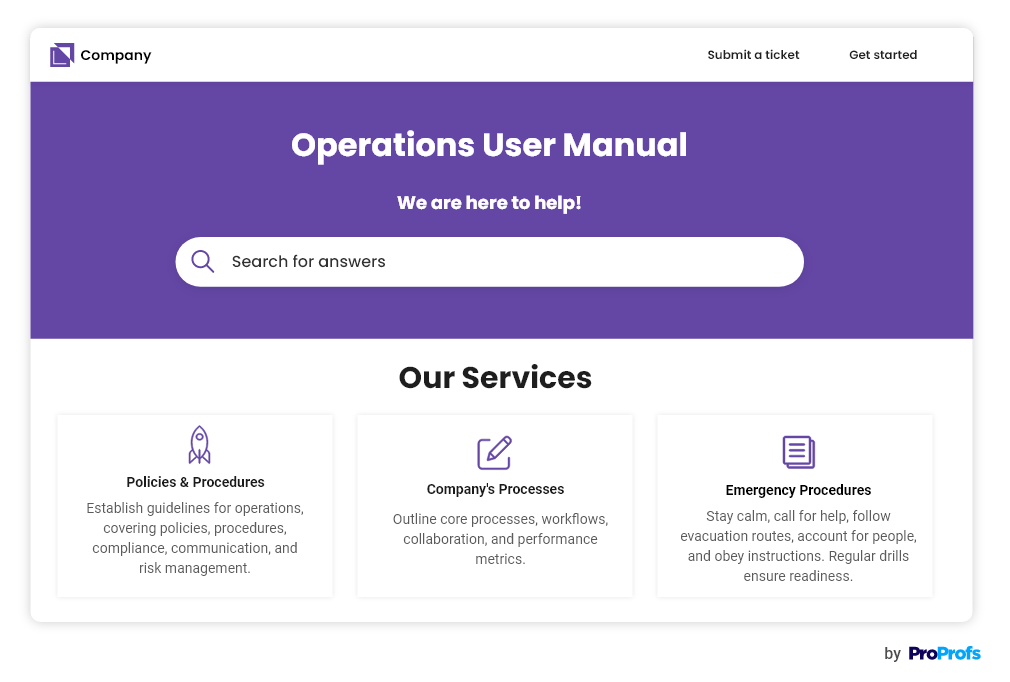
User manual templates enable a pre-designed structure and framework, streamlining the creation process and ensuring consistency in your documentation. Let’s explore some well-implemented examples of such user manuals.
1. Manage Engine
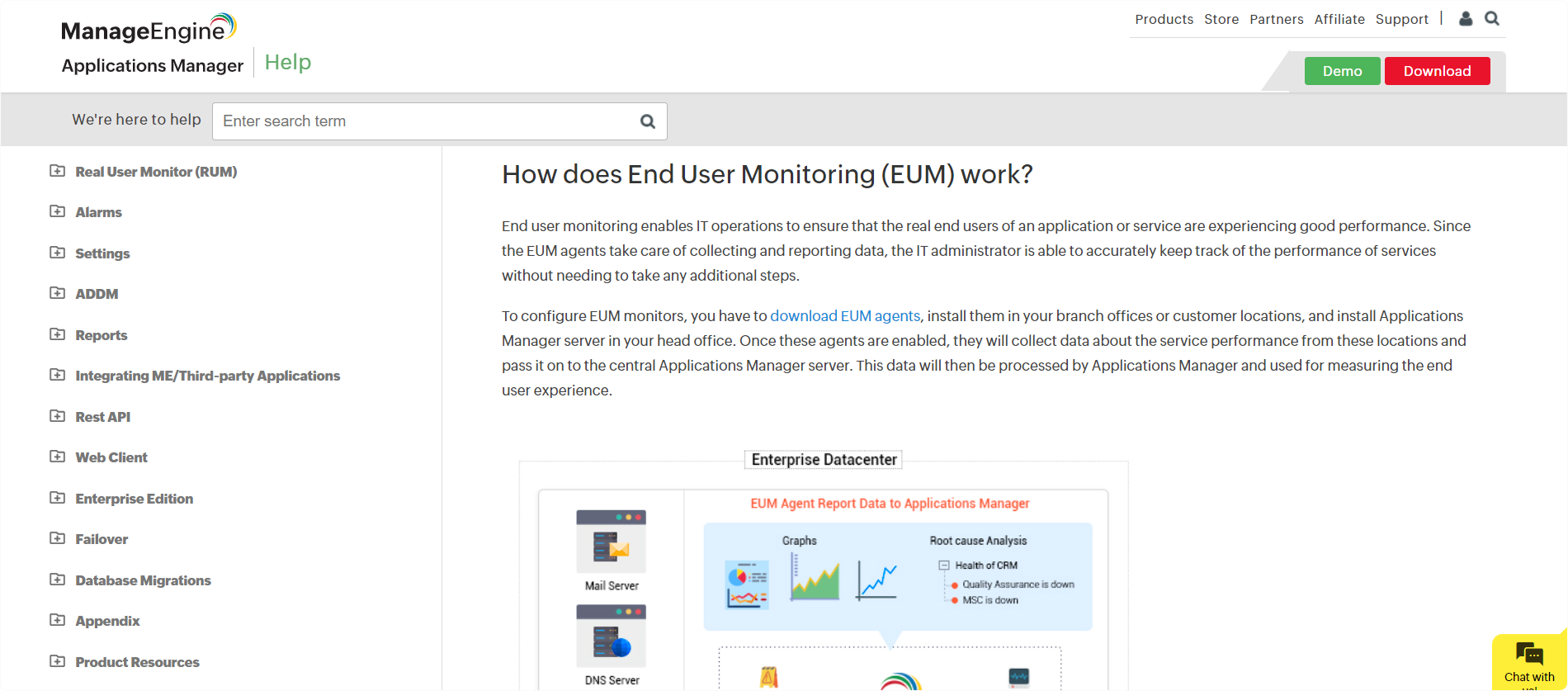
Manage Engine Help Center has a search bar on the top left to find the document you are looking for quickly. It contains toggle links for various topics.
Its user manual, ‘How Does End User Experience Monitoring (EUM) Work,’ uses simple language and relevant links. The manual also contains insightful visuals and illustrations to help readers understand.
2. CDS Convert
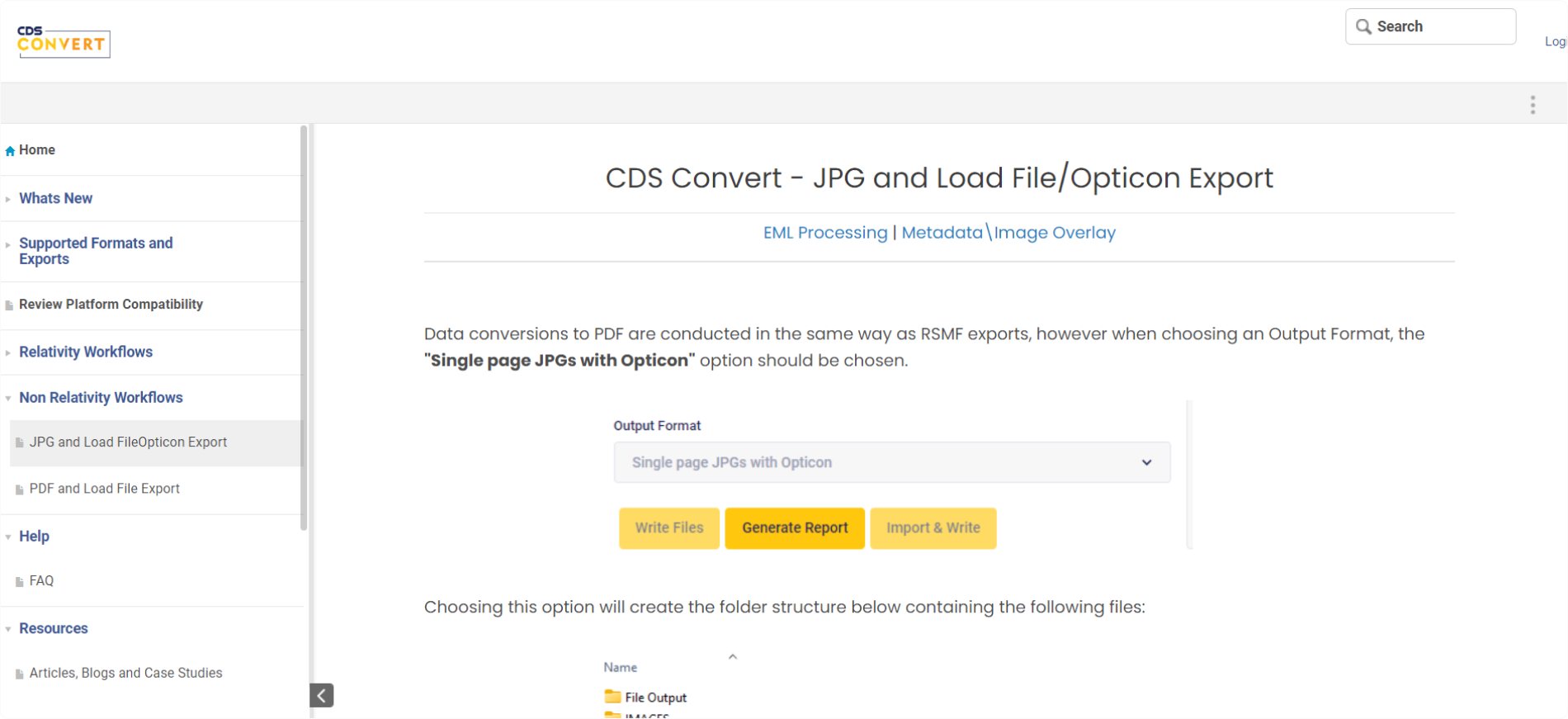
CDS Export is focused on delivering clear and comprehensive instructions for conducting data conversions to PDF and exporting JPG files.
It emphasizes the importance of choosing the “Single page JPGs with Opticon” option for creating specific folder structures containing the necessary files.
CDS also highlights the benefits of exporting data as EML files, allowing for platform-specific attachments, text indexing, OCR capabilities, and customizable settings.
3. Slack

Slack’s writing approach and strategy in its quick start guide are user-friendly and straightforward. They use simple language and focus on providing step-by-step instructions to help users understand how to use Slack effectively.
The guide explains key features such as channels, direct messages, notifications, and formatting. It also offers tips, shortcuts, and links to further resources, ensuring a seamless onboarding experience for users.
What Are the Top User Manual Tools for Creating User Manuals?
User manual tools streamline the creation, design, and management of user manuals, enhancing efficiency and improving the quality of your documentation. Here are some top, feature-rich user manual creators:
1. ProProfs Knowledge Base – Best for Easily Creating Help Sites, Manuals & Private Knowledge Bases
ProProfs Knowledge Base is a powerful platform for creating and managing user manuals. Its AI-powered editor simplifies content creation, allowing for easy formatting and multimedia integration.
It offers internal commenting for collaborative editing, allowing team members to provide feedback and make suggestions directly within the document. Role-based workflows help outline member responsibilities, ensuring that each contributor knows their specific tasks and deadlines.
The platform also allows administrators to set up roles and permissions, ensuring that only authorized users can view, edit, or manage specific documentation.
What You Will Like:
- 100+ knowledge base templates to help you create error-free user manuals easily
- Revision history to track up to 30 recent changes made to your knowledge base
- Powerful search functionality with auto-suggest and advanced filtering capabilities.
What You May Not Like:
- No downloadable or on-premise version
- Dark user interface option is not available.
Pricing:
Forever Free Plan with all the premium features for small teams. Paid plan starts at $49/author/month.
2. Whatfix – Best for Creating Interactive Help Content
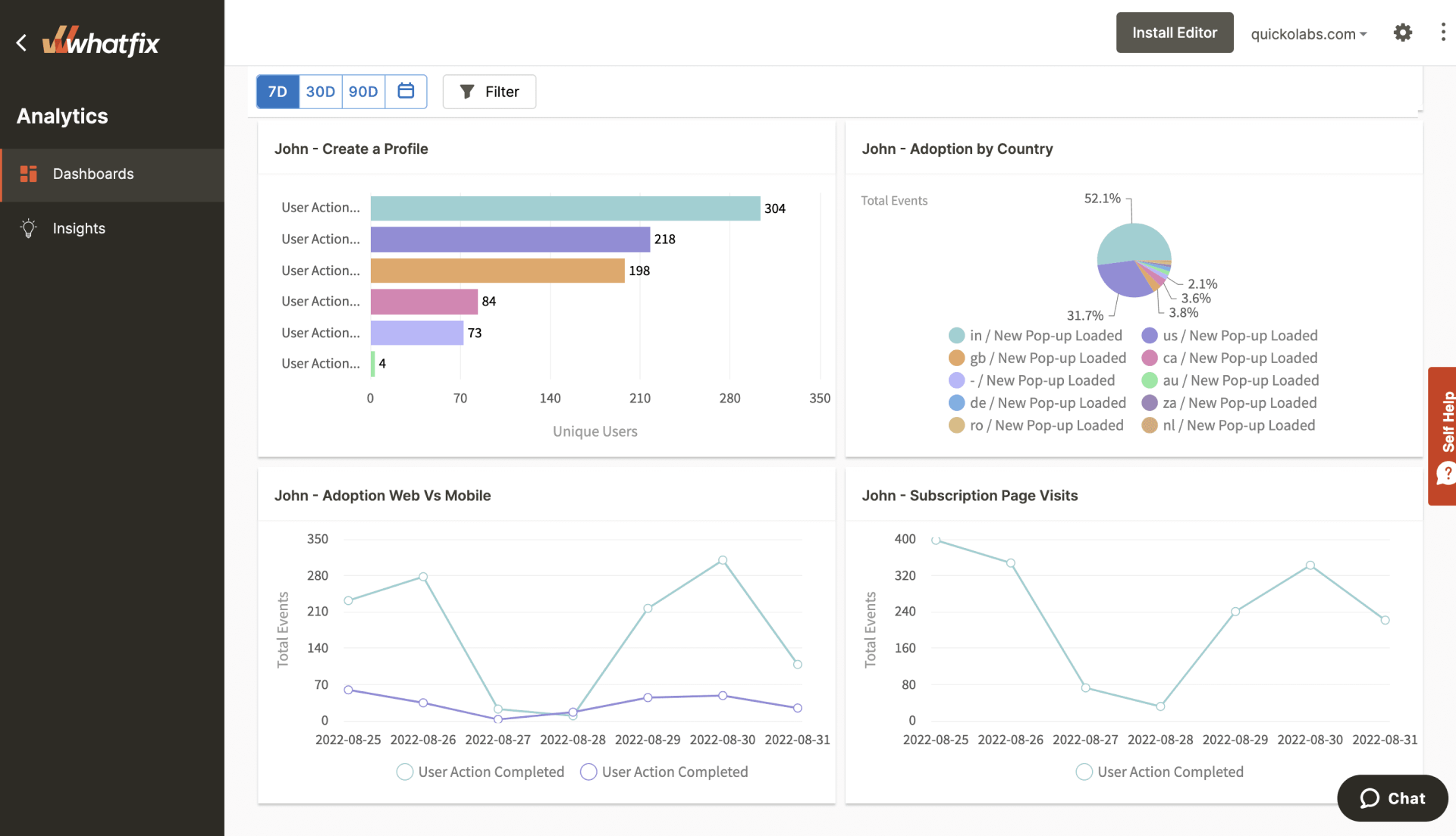
Whatfix’s digital adoption platform helps create interactive, in-app guidance that helps users learn and adopt software applications more effectively.
It helps provide contextual guidance within the application, guiding users through processes, explaining features, and offering support exactly when and where needed.
The platform also enables users to create various forms of interactive guidance, including walkthroughs, tutorials, and self-help resources. These can be tailored to specific user roles and needs, ensuring a personalized and efficient learning experience.
What You Will Like:
- The analytics dashboard provides insights into user behavior and engagement
- Enables contextual support and real-time feedback
- Integrates guidance within the application’s workflow.
What You May Not Like:
- There are occasional issues with integrating Whatfix with other platforms or software systems
- The mobile support is not as robust as its desktop offerings.
Pricing:
Offers custom pricing, starting from $199/project/month.
3. ClickHelp – Best for Creating & Publishing Context-Sensitive Help Documentation
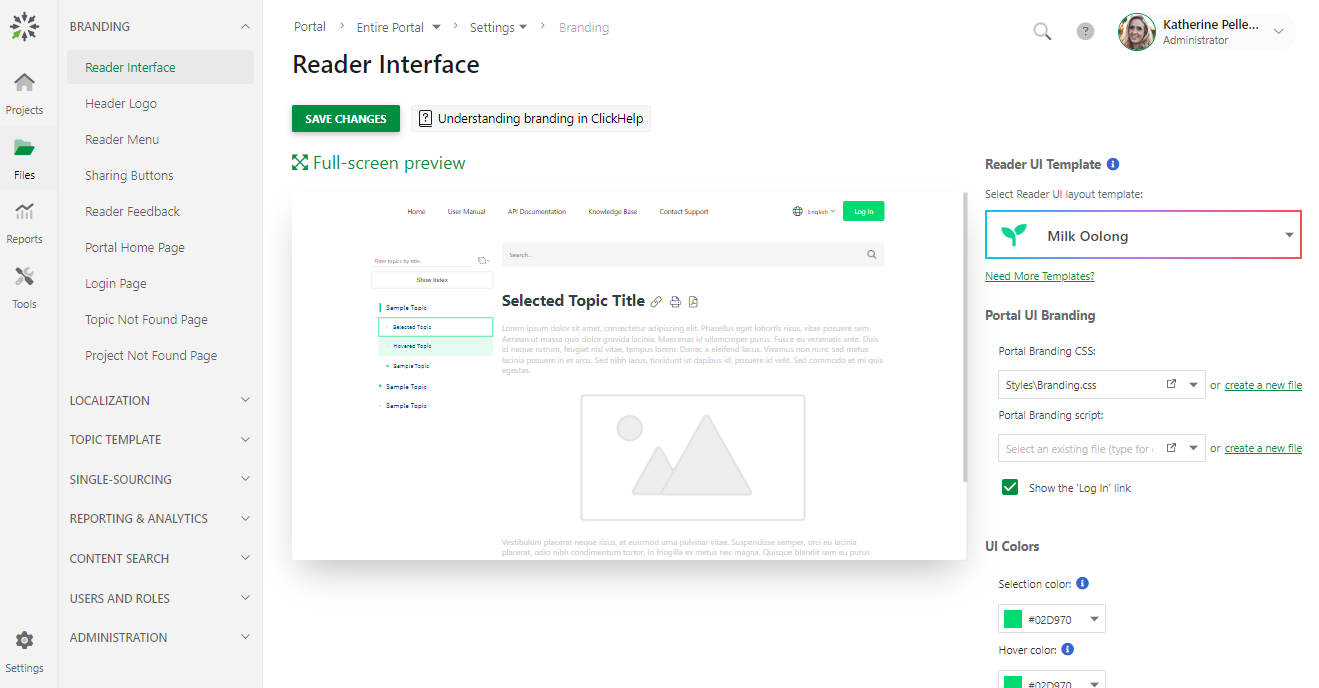
ClickHelp’s intuitive interface and robust feature set help technical writers and documentation teams efficiently produce high-quality, topic-based content.
By offering a centralized portal, it enables seamless collaboration among team members and ensures that documentation is consistent, up-to-date, and easily accessible to end users.
Also, with its support for multi-format publishing, users can create content once and export it to multiple formats, including online web help, PDF, and ePub, catering to diverse audience preferences.
What You Will Like:
- Single-sourcing capability saves time and maintains uniformity across different documentation outputs
- Intuitive UI design ensures that content is accessible and readable across various devices
- Features like version control and user permissions help manage contributions effectively.
What You May Not Like:
- Large documentation projects can impact the platform’s performance
- The user interface may seem cluttered and not as intuitive for new users.
Pricing:
Paid price starts at $175/unlimited projects/month.
Create Comprehensive, Customer-Centric User Manuals with Ease
User manuals are a critical component of product success, empowering users to understand, utilize, and troubleshoot your offerings effectively. By user-friendly manuals, you can enhance the user experience, reduce support costs, and drive product adoption.
Remember to consider the different types of user manuals, incorporate essential elements like clear language and visuals, and follow best practices for writing and designing engaging content. Utilize user manual templates and top tools to streamline the creation process.
With ProProfs Knowledge Base, you can create an online user manual to match your brand identity. The internal commenting for collaborative editing allows team members to provide feedback and make suggestions directly within the document. You may explore the tool more below.
FREE. All Features. FOREVER!
Try our Forever FREE account with all premium features!








